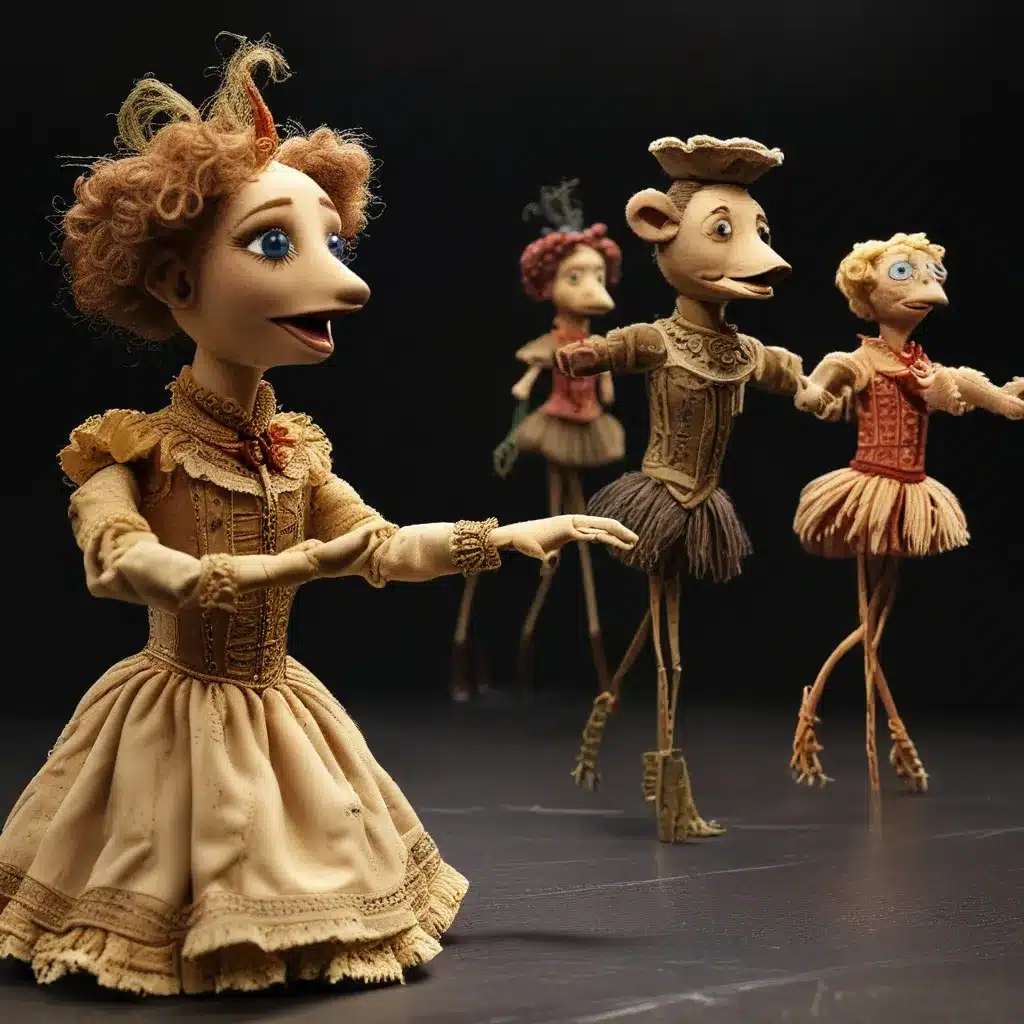
Bringing Inanimate Objects to Life
As a lifelong lover of the performing arts, I’ve always been fascinated by the magical world of puppetry and its seamless integration into the realm of musical theater. From the whimsical dancing marionettes of “The Sound of Music” to the menacing plant-like creature in “Little Shop of Horrors,” puppetry has the power to captivate audiences and breathe life into the most unexpected characters.
In my quest to uncover the rich history and evolution of this art form, I embarked on an enchanting journey that led me to discover the Wolf Trap Institute, a renowned organization dedicated to incorporating the performing arts into early childhood education. Through their workshops, I learned that puppetry not only sparks the imagination of young minds but also serves as a powerful tool for teaching essential problem-solving and critical thinking skills.
Exploring the World of Puppetry
As I delved deeper into the world of puppetry, I was amazed to discover the diverse range of techniques and styles that have emerged over the centuries. From the ancient shadow puppets of Asia to the intricate marionettes of Europe, this art form has truly transcended cultural boundaries and continued to evolve, adapting to the ever-changing landscape of the performing arts.
One of the most intriguing aspects of my research was learning about the World of Puppets exhibit at the Cleveland Public Library. This captivating display not only showcased the rich history of puppetry but also highlighted its enduring influence on popular culture, with appearances from beloved characters like Sesame Street’s Oscar the Grouch and the carnivorous plant Audrey II from “Little Shop of Horrors.”
As I wandered through the exhibits, I couldn’t help but be struck by the sheer ingenuity and craftsmanship involved in bringing these inanimate objects to life. From the meticulously carved wooden figures to the intricate mechanisms that allowed them to move with such fluid grace, it was clear that the art of puppetry required a deep understanding of engineering, drama, and artistic expression.
The Rise of Puppetry in Musical Theater
It was against this backdrop of rich cultural heritage that I began to explore the role of puppetry in the world of musical theater. As I delved into the history, I discovered that the integration of puppets and marionettes into theatrical productions dated back centuries, with early examples found in ancient Chinese and Greek traditions.
However, it was in the 20th century that puppetry truly came into its own as a integral part of the musical theater experience. One of the most iconic examples is the beloved “The Sound of Music,” where the adorable von Trapp children’s marionettes captured the hearts of audiences worldwide with their joyful and precise movements.
But puppetry’s influence in musical theater goes far beyond the charming and whimsical. In the eerie and haunting “Little Shop of Horrors,” the towering, plant-like creature Audrey II served as a menacing antagonist, its gaping maw and sinister movements adding an extra layer of tension and suspense to the production.
Pushing the Boundaries of Puppetry
As I continued to explore the evolution of puppetry in musical theater, I was struck by the sheer creativity and innovation that has pushed the boundaries of this art form. Take, for instance, the groundbreaking work of the Frisch Marionettes, who have mesmerized audiences with their breathtaking renditions of classic tales like “The Jungle Book.”
Through their performances, I witnessed the incredible technical mastery required to bring these intricate marionettes to life, with each movement and gesture choreographed with precision and grace. It was a humbling reminder of the dedication and skill that goes into this art form, and the ways in which it can elevate the theatrical experience to new heights.
But puppetry’s role in musical theater isn’t limited to just the stage. In fact, the rise of television has opened up a whole new world of possibilities, as evidenced by the beloved Hickory Hideout, a children’s puppet show that captivated audiences for over a decade.
Celebrating the Art of Puppetry
As I reflect on my journey through the world of puppetry and its enduring presence in the realm of musical theater, I’m struck by the sheer beauty and power of this art form. It’s a testament to the human creativity and ingenuity that can breathe life into the most unexpected of characters, captivating audiences and leaving an indelible mark on the performing arts.
And as I look to the future, I’m excited to see how the art of puppetry will continue to evolve and push the boundaries of what’s possible. Perhaps we’ll see even more innovative and technologically advanced puppets gracing the stages of our beloved musical theaters, or perhaps the art will take on new and unexpected forms, capturing the imaginations of generations to come.
One thing is certain, though: the magic of puppetry will always hold a special place in the hearts of those who love the performing arts. And as I continue my own journey of discovery, I can’t wait to see what other wonders this enchanting world has in store.
So, if you’re ever in the mood to witness the extraordinary power of puppetry, I encourage you to visit the Musical Theater Center and immerse yourself in the captivating world of these inanimate objects brought to life. Who knows – you might just find yourself transported to a whole new realm of imagination and wonder.

